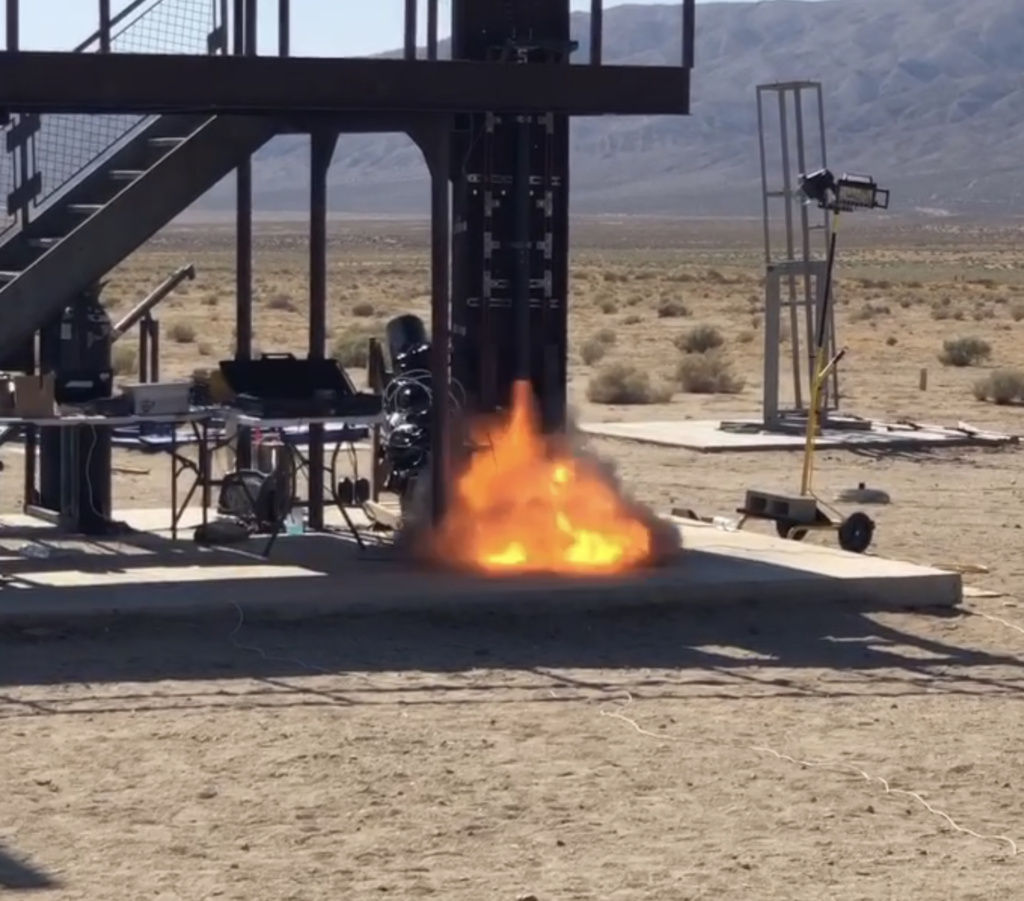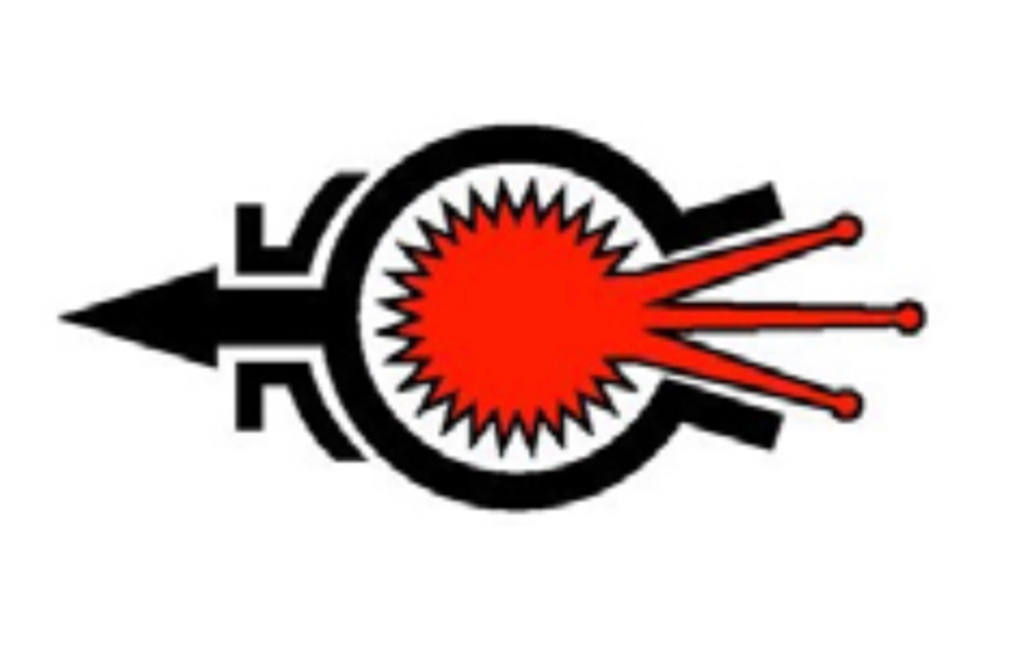by Joel Cool-Panama, Secretary, RRS.ORG
The UCLA Prometheus team arrived to the MTA late Friday night under cold winds and light rain. Taking shelter from the elements, many set up their tents inside the Dosa Bldg.
The UCLA team brought their latest custom hybrid motor for a horizontal static fire. Dave Nordling served as pyrotechnic operator with Rushd Julfiker and Dimtiri Timohovich apprenticing. After passing low pressure leak check, they corrected issues in high pressure leak check. Some minor control issues set back first hot fire to just past sunset. First igniter was a dud. Pyro-op in charge permitted a second attempt with a new igniter. Improper sequencing pushed out the second igniter before the booster charge could light the motor grain under the rush of the oxidizer stream which resulted in the dumping of the nitrous oxide flow over the grain with no ignition. After some consideration to adjust the timing and reset a new electric match, given the late hour and a concern about hard starting the motor with a recently oxidizer soaked grain, the pyro-op in charge opted to call off the event. Our unpaid volunteer pyro-ops sometimes will stay late, but sunset is generally considered the cutoff point. UCLA put a great deal of effort and ingenuity but with no success by the end of the event as sometimes happens despite best efforts. UCLA was very courteous throughout the whole event and the RRS looks forward to the Prometheus team’s return to the MTA.


Dimitri and his colleague, George Warner, began the trenching and electrical work this weekend needed to connect our new diesel generator at the MTA which will soon serve our larger electrical and lighting needs around our facility. The work continued through Sunday, 3/3/2024. The crew cabin (Bldg 15) and the office (Bldg 14) were the first fully-owned RRS owned to be connected to electrical power as they have air conditioning. This will be a welcome resource in the late summer months.


Rushd Julfiker is working on his 38mm Contrails hybrid kit motor for an initial static fire. Rushd refilled the society’s nitrous bottle. Dave Nordling and Dimitri Timohovich brought and shared their resources and experience. A hybrid motor firing hasn’t been done in a few years and its good to bring this work back as society. Unfortunately given the late hour and missing the nylon tubing needed, Rushd will return at a later date.
Osvaldo Tarditti worked on the shower systems in the restroom facility. We hope to have this convenience working in the coming months. The toilets, urinals and sinks continue to run well even during high usage periods. The convenience of this facility at our remote location has been a much lauded benefit.
Dave Nordling added metal folding handles to the backsides of the wooden privacy panels in the windows of Bldg’s 14 and 15 for easier removal and replacement. These heavy panels help insulate the interior from the beating sun. Also, the RRS ate its first meal inside Bldg 15. The large interior space also can offer our visitors shelter from the elements once we add the beds and more chairs inside.


Dimitri brought the methanol run tanks and empty gas bottles used only for public exhibitions to the MTA. Dave Nordling brought the steel support frames to the MTA along with several components for the fluid feed systems for the 1936 GALCIT engine replica. The first engine parts will be brought to the MTA this coming Thursday when American Artist visits the site for the first time. We look forward to his visit and beginning the first steps in the project.

RRS members involved with the LACMA / American Artist project including RRS President, Frank Miuccio,will be at the MTA on Thursday, March 7, 2024. This will be the first time that American will see the site. Establishing the filming location for the static fire of the 1936 GALCIT replica rocket engine will be the first priority. American’s cinematographer (Chester) and a documentary film crew from PBS will also be present that day.
Next monthly meeting of the RRS will be March 8, 2024, at the Compton/Woodley Airport.

























